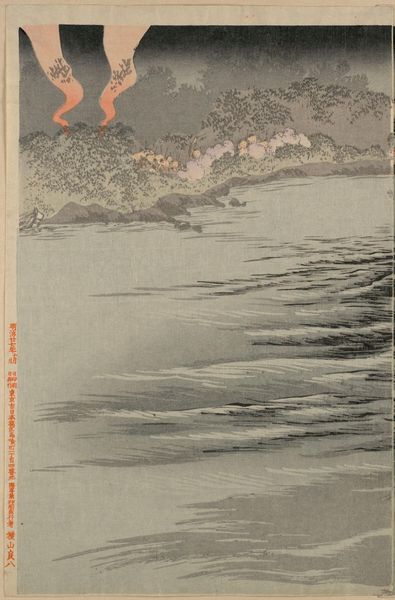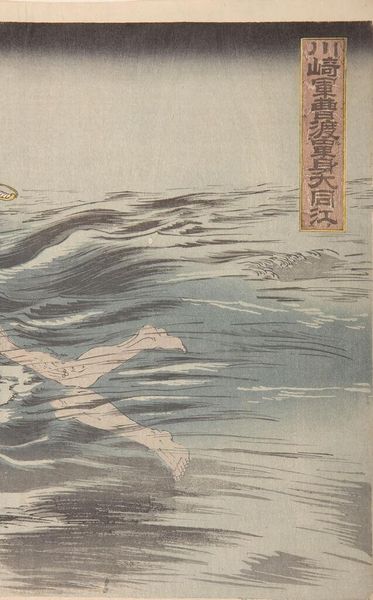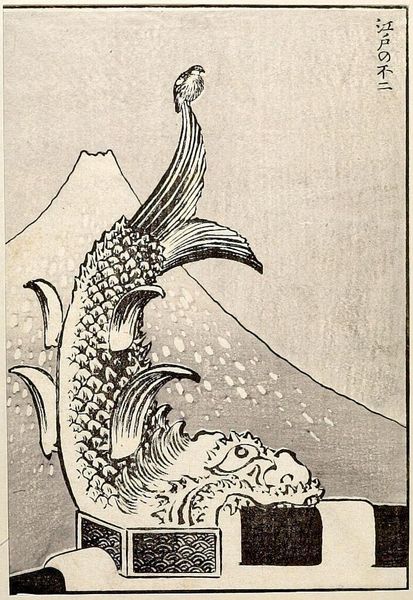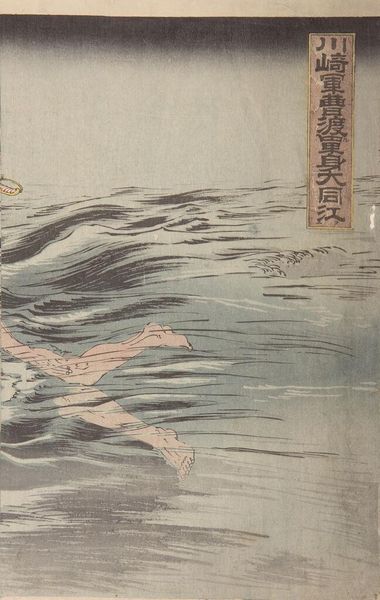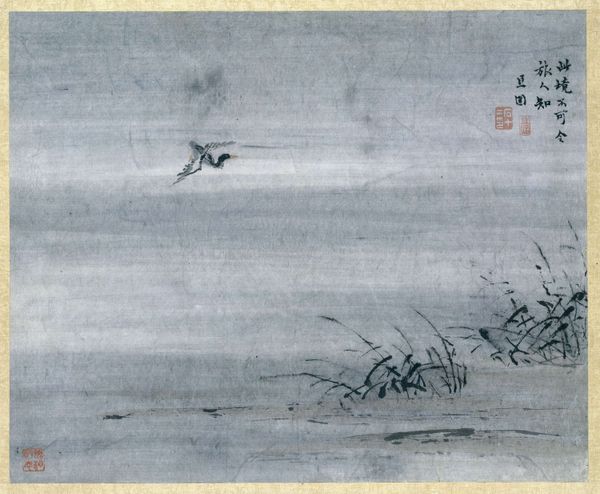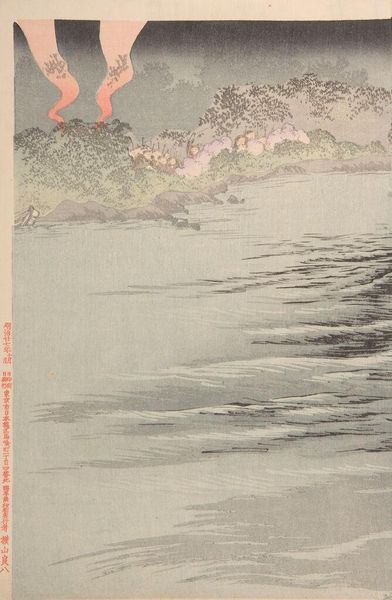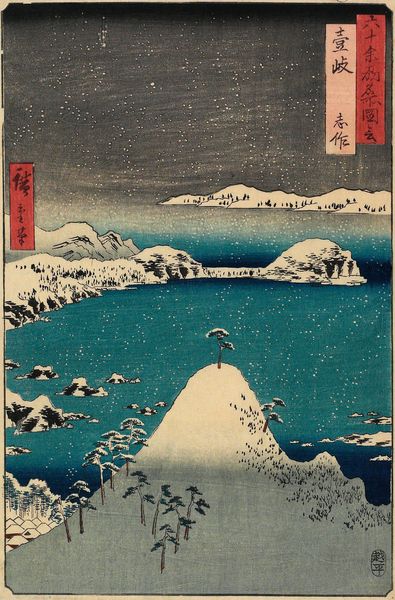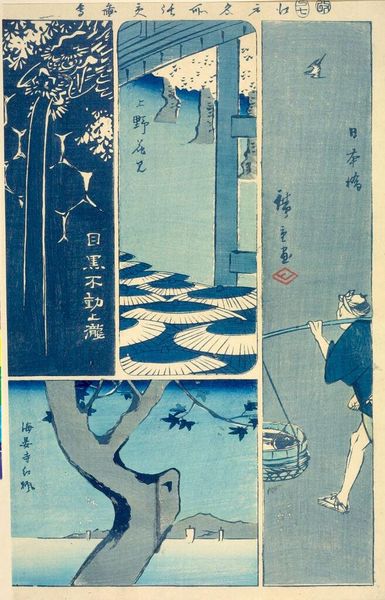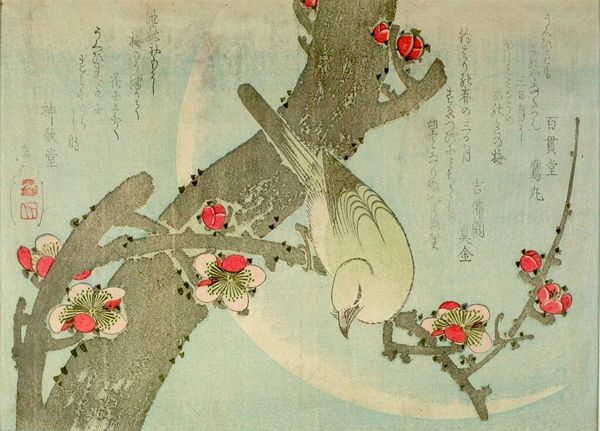
Dimensions: 13 × 4 3/16 in. (33 × 10.6 cm) (image, aitanzaku)
Copyright: Public Domain
Editor: Hiroshige's "Mandarin Ducks in Snow," likely from 1854, is a lovely woodblock print. It feels so serene, but also a bit melancholy with the falling snow. The ducks seem a little isolated. How do you interpret this work, looking at the symbolism maybe? Curator: I see layers of symbolic weight. Ducks, particularly mandarin ducks, often represent marital happiness and fidelity in East Asian art. But consider the snow – a symbol of purity, yes, but also of impermanence, and the hardships of winter. Editor: So, there's a contrast then? Curator: Precisely. The enduring hope of the ducks, paired with the fleeting nature of the snow. The winter chrysanthemum adds to this—they bloom in the cold, but briefly. How does the composition reinforce these themes, do you think? The long, vertical format… Editor: Maybe the verticality emphasizes the fall of snow, and the passage of time or hardship weighing down on these symbols of hope and happiness? Curator: Exactly! Consider too the 'floating world' aesthetic, ukiyo-e. The beauty of the present moment is accentuated by its ephemerality. We’re meant to appreciate the ducks' resilience against the harsh backdrop. The flowers are vibrant, too, though barely surviving in the harsh winter. Editor: It is really fascinating how those visual elements talk to each other, setting up what almost feels like a little narrative about resilience, loss, and love all at once. Curator: Yes, the image carries both cultural and personal stories—perhaps reminding us that even in the harshest landscapes, love and beauty can endure. Editor: Thanks so much, seeing that has really transformed how I look at this piece. Now it is not just visually striking, but narratively rich.
Comments
No comments
Be the first to comment and join the conversation on the ultimate creative platform.


